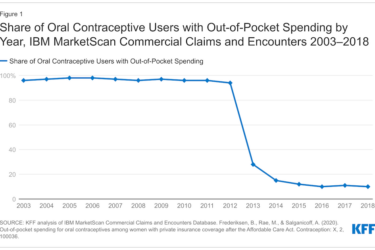
Here’s the bare-minimum definition of value-based insurance design: Those who are the most ill should pay the least for treatment.
The concept of VBID is a bit more complex, of course, but at its core, VBID would let those who would benefit the most from medications and other health care services pay the lowest in copayments and deductibles. In other words, there would be low or no financial barriers to the care these patients need.
Now let’s take the idea one step further. If some medications and medical services are so clearly beneficial that the insured would benefit to the point where savings would result, then should health insurers consider paying members to take some medications? And, should insurers also pay members to get certain high-value services?
On Thursday, A. Mark Fendrick, M.D., the director of the Center for Value-Based Insurance Design at the University of Michigan, will explain VBID in detail and address this somewhat startling possibility. In particular, he will discuss why health insurers should adopt VBID and why members of Congress in HR 5138 (pdf) are urging the federal Centers for Medicare & Medicaid to evaluate the effects of VBID for Medicare Advantage members.
Fendrick will be our guest for a webcast on VBID from 1 to 1:30 pm. Members are invited to participate and submit questions.

Ideally, health insurers would adopt financial incentives that reduce or eliminate barriers to care, Fendrick said. Consider, for example, how VBID would work with high-cost specialty medications, an issue that has generated a lot of interest among journalists recently. See, for example, this article by Margot Sanger-Katz in The New York Times. Sanger-Katz explained that Sovaldi, a medication for patients with hepatitis C, is among the most expensive of a number of medications approved recently. Of the 12 drugs the Food and Drug Administration approved in 2012 for patients with cancer, 11 of them cost more than $100,000, she wrote.
In an earlier article about Sovaldi, Sanger-Katz also reported that while the research was preliminary, the medication may have the potential to save money over time. This is where VBID could be particularly useful.
As we reported in a blog post in June, some of the new specialty drugs cost $66,000 to $90,000, making them unaffordable for many consumers. If Sovaldi costs $1,000 per pill then consumers with a copayment of 30 percent would need to pay $300 for the initial cost of each pill until they reached their deductible. A full course of Sovaldi costs $84,000 and so members with hepatitis C would certainly exceed their deductibles early in the course of treatment. It’s one pill at $1,000 once a day for 12 weeks and reportedly it has a 90 percent ‘cure’ rate, as Ed Silverman reported in The Wall Street Journal’s Pharmalot blog.
In an article in The Boston Globe, Felice J. Freyer explained how consumers are paying more for high-cost drugs. “Some plans group all specialty drugs into a separate ‘tier,’ requiring patients to pay 20 percent to 50 percent of the cost, rather than the flat dollar amount required for other drugs.”
But if Sovaldi has the potential to save money over time, health insurers may want to ensure that its members with hepatitis C take the drug as prescribed. Therefore, a health plan using VBID could eliminate the copayment for Sovaldi or may pay its members to take the drug.
A recent report on specialty drugs from the Health Research Institute at the consulting firm PriceWaterhouseCoopers shows that 34 percent of employers responding to a survey said they would require consumers to pay $60 or more for specialty drugs.
But the report also said that new high-cost therapies such as Sovaldi play an inflationary role in the short run, potential long-term savings from these innovative new cures could be substantial.
The PwC report added:
“Compare the average $86,000 for a course of the new therapy to medical costs for treating those with varying severity of liver disease. For instance, patients with no scarring of the liver can incur average annual costs of $17,000. Patients with compensated cirrhosis, a scarred but functional liver, can incur $270,000 in treatment over a decade. At the most severe side of the spectrum, patients who require a liver transplant could expect to be billed an average of $580,000.”
While not actually saying the new medication would provide a return on an insurer’s investment in Sovaldi, the report clearly suggested that the potential is there, and VBID may be the tool insurers should consider to realize that potential.









